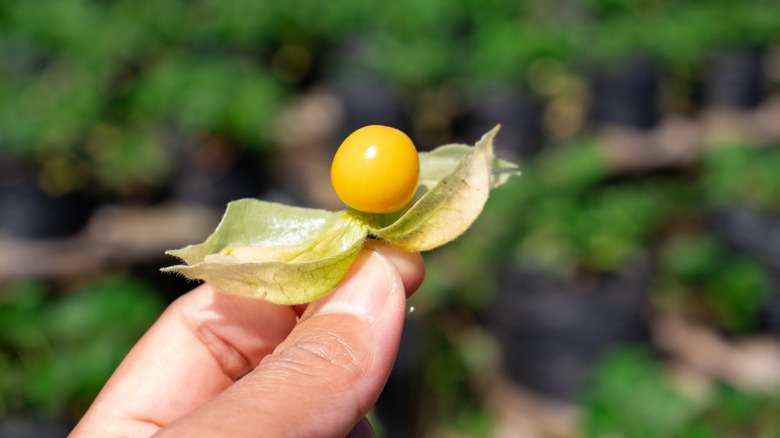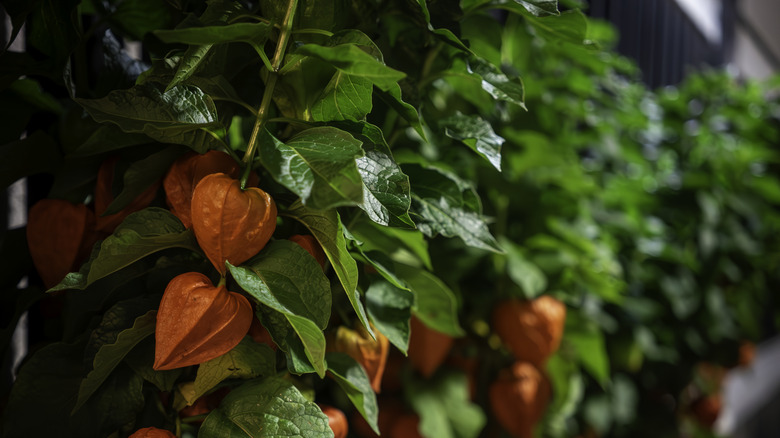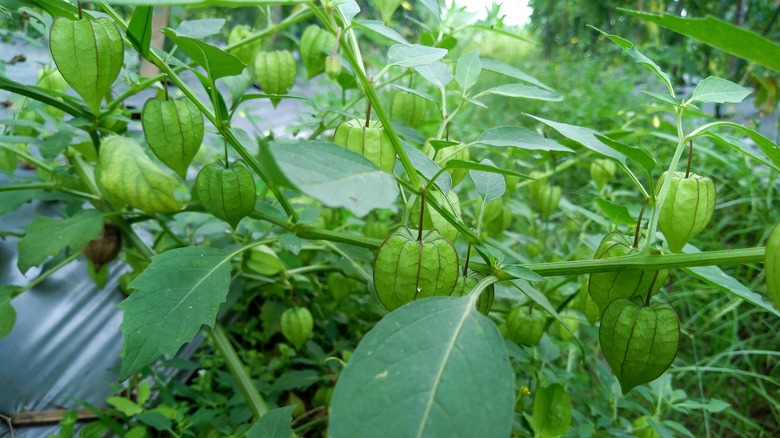What You Should Know Before Planting And Growing Ground Cherries
Ground cherries (Physalis spp.) aren't cherries at all. Instead, these fascinating plants from the Americas are more closely related to tomatoes and other nightshade vegetables. You can easily grow these fascinating fruits yourself as long as you are willing to start them from seed, meet their needs for sunlight and good soil, give them space and support, harvest them at the right time, and are mindful of their toxic characteristics.
Despite being closely related to tomatillos, ground cherries are sweet themselves, and their flavor is often described as a mix of pineapple and tomato. While ground cherries seeds are relatively available from online retailers, live plants are often more difficult to find. Fortunately, starting ground cherries from seed isn't a terribly difficult process. It's best to start the seeds indoors two months before your last frost, using a heating mat to speed germination. Make sure your ground cherries seedlings are grown in a good seed starting mix and have plenty of light. They can be transplanted outdoors once nighttime temperatures are consistently above 55 degrees Fahrenheit. Don't forget to harden off your plants, which means allowing them to slowly acclimate to outdoor growing conditions by having them spend progressively longer periods of time outside over a period or one to two weeks.
The best growing conditions for ground cherries
Once the weather is warm enough and your plants are hardened off, you're ready to plant your ground cherries in the garden. Like their tomato cousins, ground cherries need full sun to grow and thrive. They also require moist and well draining fertile soil, so be sure they get around an inch of water a week.
While ground cherries don't get nearly as tall as some tomato plants (they generally top out at around 3 feet tall), they should still be given some support to keep them from sprawling on the ground. Plant your ground cherries with about 4 square feet of space each to prevent overcrowding. You may also want to mulch around your plants with straw. Not only will this give your plants more consistent soil moisture and prevent weed growth, but it will also make it far easier to harvest your ground cherries once they are ready.
Harvesting and eating ground cherries
Ground cherries generally ripen in late summer or early autumn. Once a ground cherry is fully ripe, the husk that the fruit grows in will become dry and fall to the ground — this is why it is so important to have straw or other good quality mulch around your plant. Ground cherries are also very prone to self-seeding, so avoid leaving any fruit on the ground if you don't want a garden full of ground cherries the next year.
One essential fact to remember about ground cherries is that all parts of the plant other than the ripe fruit are toxic. This includes unripened fruits as well as the leaves, roots, and even flowers and stems. This isn't only a concern for people, but also horses and cattle. However, safely growing ground cherries is worth your while, as not only are the fruits delicious and difficult to find in stores, but the plants are also popular with pollinators including bees that specialize in pollinating members of the Physalis genus.


